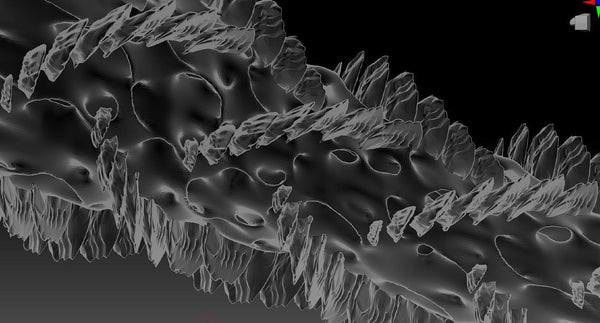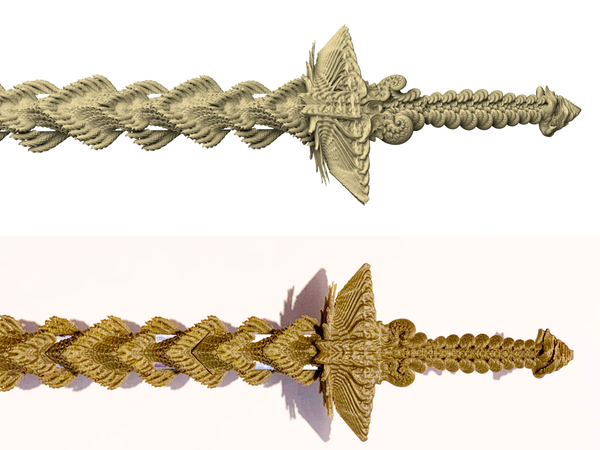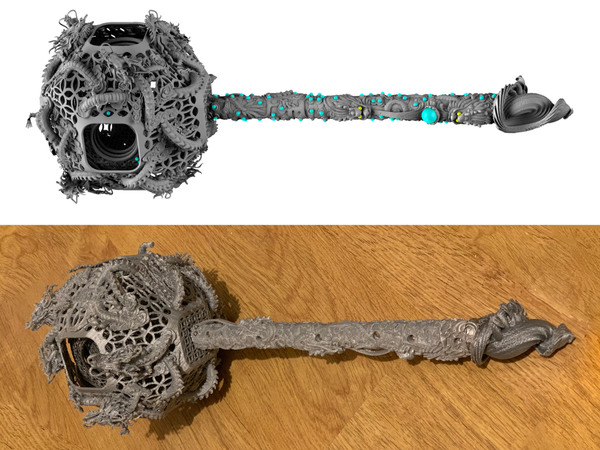WAYANG CONTEMPORARY COSTUMES
BY BAëLF DESIGN
Jamela Law and Lionel Wong together founded Baëlf Design, based in Singapore, and Hong Kong. This is where the futuristic reinterpretation of Wayang performances takes form and where they create many different things from fashion to interactive art installations.

Chinese opera has its origins in Shang dynasty rituals in China but has evolved to become an established, stylized dramatic art form in many parts of Asia. Wayang is a Malay word that means “a theatrical performance employing puppets or human dancers” and is usually found in Singapore. It was brought by immigrants from China in the 19th century as part of their religious rituals. The popularity of Wayang soon rose to such a level that the large crowds at these performances worried the authorities. Since then, the popularity of Wayang has faded due to modern developments.
“In today’s increasingly globalized and polarised world, Singapore is facing rapid shifts in our social and cultural environment,” Jamela explains why she chose this specific topic. “The Wayang scene is dying because the younger generation is simply not interested, and the older performers have no one to pass their skills and knowledge.”

(Jing Role, source: Wikipedia)
The basis behind this project is also a citation by the founding Prime Minister of Singapore, Mr. Lee Kuan Yew, “Heritage is not something static, lying hidden to be discovered, admired and conserved. It is a part of the lives of people. It shapes the ways people meet new challenges and helps them adapt and to survive.”
Each of the main traditional Wayang roles carries a corresponding trait, identity, and temperament. Chinese operatic roles generally fall into one of four main categories, Sheng (male), Dan (female), Chou (clown), and Jing (mighty/painted face). Each role has several sub-roles, usually classified by age, status, and or personality. For example, Sheng roles are broadly classified by age – Lao (“old”) or Xiao (“young”) – and status – wen (“scholarly”) or wu (“military”).

(Dan role, source: Wikipedia)
JING
Jing characters are usually high ranking, mighty male characters wearing grandiose costumes. Baëlf Design hopes to challenge tradition by breaking the gender norms and envisioning narratives where a woman can be a person of power as well. The female Jing character will possess a goddess-like presence, emitting an aura of power and grace. In traditional Chinese opera, one-way cross-dressing was common, with male actors performing female roles in the past. It was considered improper for a man to appear on stage with a woman, and opera troupes commonly employed all-male cast members. Luckily times have changed, and women get to play male roles nowadays too.

The 3D printed dress’s silhouette takes inspiration from the cascading spherical volumes on the traditional dress, where the widest falls on the waistline. Tessellating patterns of dragon scales are replaced by systematic computer-generated twisty patterns, suggesting dynamic flight-like movements. The presence of a loose hanging belt is retained. The dress parts were 3D printed in TPU Flexfill 92A Natural, then spray painted with copper color. Afterward, the components are mounted onto a translucent polyester fabric shell, over a base finished with a mandarin collar and rounded hemline.

DAN
Futuristic interpretation of Hua Dan, aka the female protagonist. The costumes are typically vivid in design and color, with plenty of intricate floral elements and symmetrical details. We upgraded the design by introducing algorithmically generated flower and seashell-like elements. The dress parts are printed in TPU Flexfill 92A Signal Red and TPU Flexfill 98A Signal Red.


Stage props
Stage props are kept to a minimum and are often used symbolically. For example, a horsewhip represents a horse, while flags and banners with clouds and wind prints represent storms. Stock props include chairs, tables, lanterns, candles, fans, wine jars, and cups. Baëlf chose to design and print a sword in PLA Extrafill Gold Happens and war hammer in PLA Extrafill Rapunzel Silver, with PLA Extrafill Vertigo Grey details on the inside of gyroscopic sphere mechanism.


Quite early in the designing and modeling process, they have to ‘Recontextualise the landscape.’ Jamela compares this technique to the cartographers by overlaying cartesian grids on maps, with latitudinal and longitudinal axes, to make it easier for people to navigate. Finding it useful to envision the human topology using grids of quad shapes. By manipulating mathematical algorithms, they can formulate a collection of elaborate 3D assets for their visual library in Rhino3D. This technique’s parametric nature also means that they can intuitively and easily customize the appearance of these the unit they are working on. Other variables can be changes by swiveling and scaling of all the different elements providing visual variation and movement.

Jamela also has some advice for anybody who wants to lay a hand on prototyping. “Firstly. Always stock up more filaments than you think you need! Fillamentum’s materials are so beautiful and would inspire you to keep prototyping. It would be a killjoy moment to find out you run out of a specific shade. And secondly. Invest in a good printer. Suppose you tend to do big prints. Get a printer with a filament sensor that notifies you when your filament runs out and comes with memory storage. In that case, it will allow you to continue the print where it paused after a power disconnection. It can save you from many heartbreaks.“
Printed with:
TPU Flexfill 92A Natural
TPU Flexfill 92A Signal Red
TPU Flexfill 98A Signal Red
PLA Extrafill Gold Happens
PLA Extrafill Rapunzel Silver
PLA Extrafill Vertigo Grey
Follow Baëlf design:
Follow Fillamentum:
